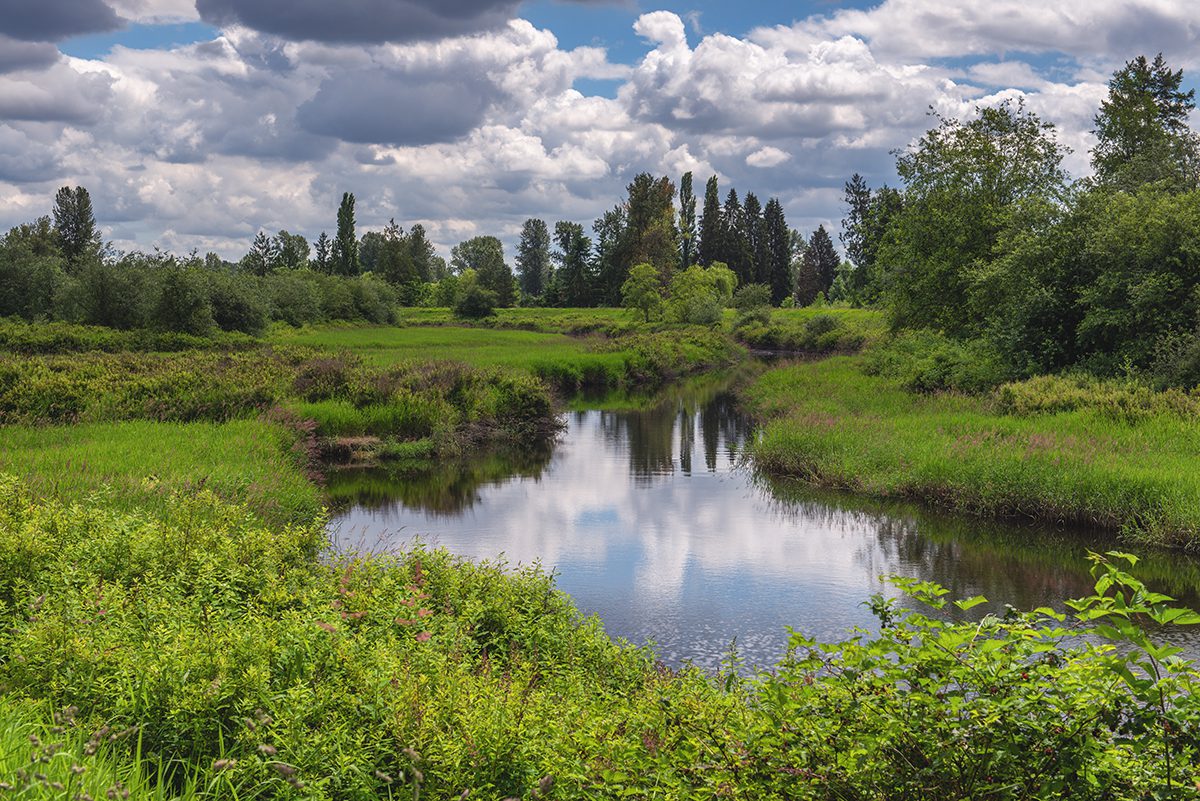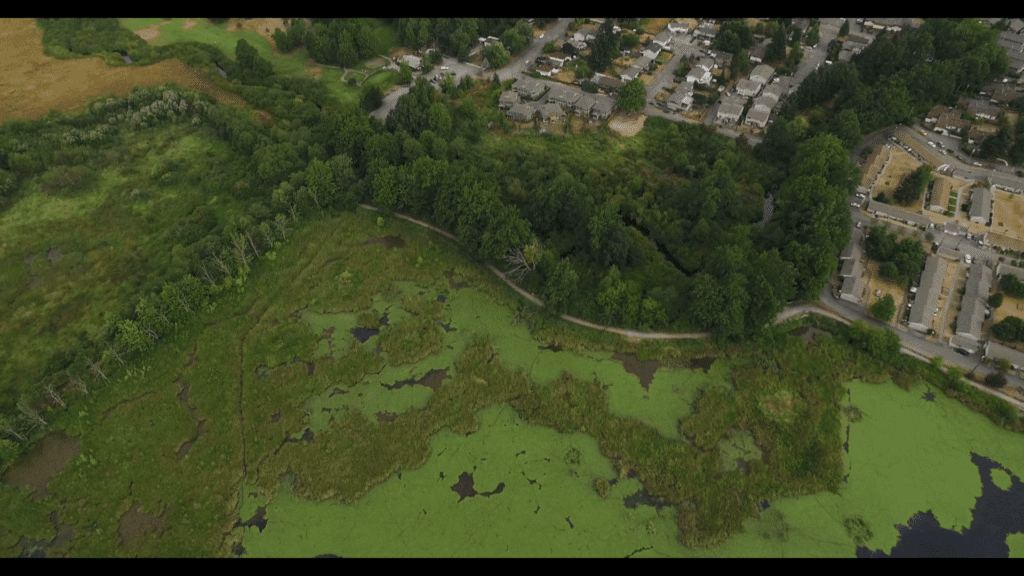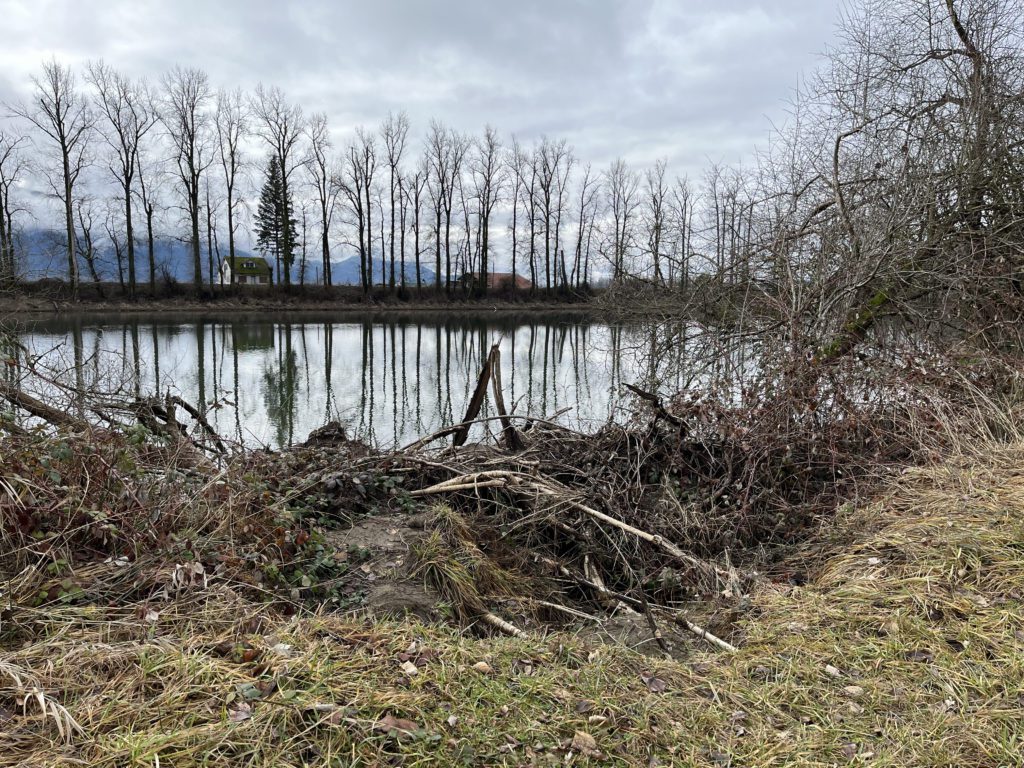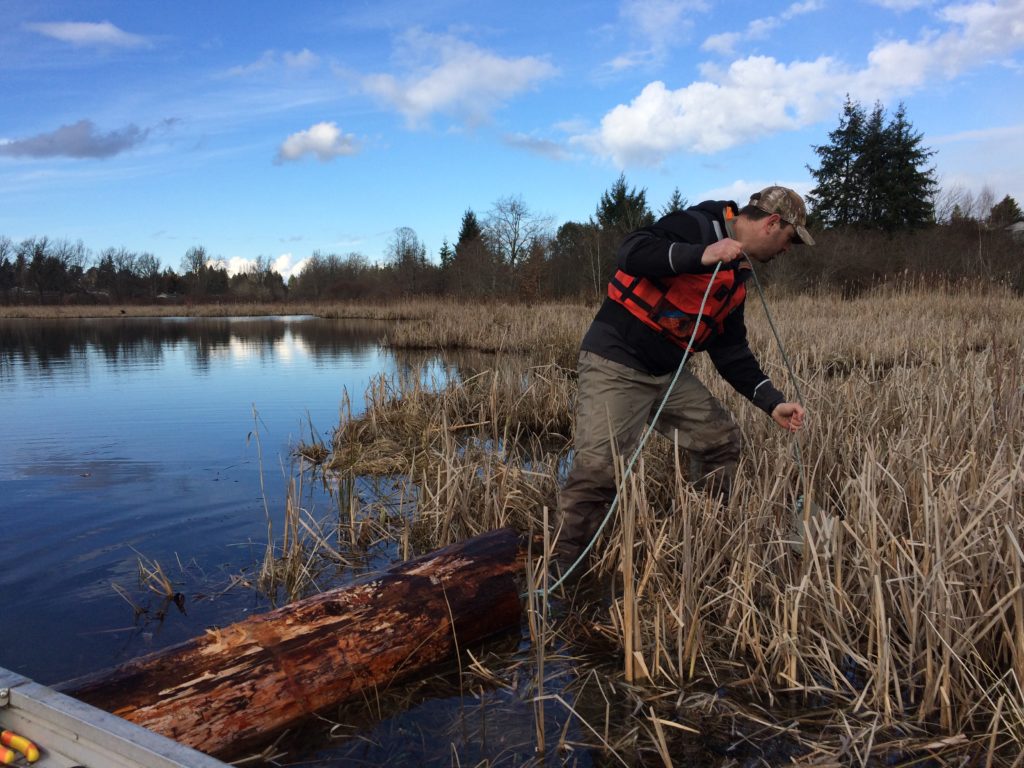
By Shannon Marshall
Wetlands are complex ecosystems – providing a unique refuge for a wealth of plants and animals. These special environments also help sustain life in surrounding habitats and human establishments as well.
There are many types of wetlands, including marshes, fens, and peatlands. Some are natural, some artificial, some permanent, some temporary. Wetlands can include static or flowing water, as well as fresh, brackish, or salt – including areas of marine water. The common characteristic of all of these areas – and the thing that defines them as wetlands – is their saturation with water. Permanently or intermittently, for a long enough time that low oxygen levels create conditions that allow for the growth of aquatic plants and other biological activity.

Buttertubs Marsh from above
The incredible value of wetlands is disproportionately large compared to their relatively small area in the greater BC landscape. They contain some of the richest biodiversity in the country and are considered to be some of the most productive ecosystems in the world. The importance of protecting and managing these habitats cannot be understated given their benefits to humans and wildlife alike. For example, wetlands have been shown to clean water supplies, provide flood protection and mitigate the impacts of climate change. It is also estimated that more than 50% of wildlife species in North America rely on access to wetland habitats for at least part of their life cycles, and almost 35 per cent of all rare, threatened, and endangered species depend on these specialized ecosystems (BC/NTBC, 2019-2020).
Wetlands in Canada remain under constant threat of loss and degradation due to industrial development, urban expansion, construction of hydroelectric reservoirs and facilities, fluctuation of water levels, and agricultural development. Over the past two decades, the loss of wetlands in BC has increased – specifically on eastern Vancouver Island, the Lower Mainland, and the Okanagan. Losses in BC include 70 per cent of the original wetlands in the Fraser River Delta, 70 per cent of the wetlands in the Victoria region and 85 per cent of natural wetlands in the south Okanagan.

Bank erosion on the edge of a former field at Nicomen Slough
For over a century, wetlands in BC have been diked or drained. The sedimentary plains lying below wetlands provided a perfect, fertile, and flat area for farmers to easily convert into crops (Wetland Stewardship Partnership, 2010). Instead of having to remove forests and other vegetation from the land, draining wetlands was much simpler and less time consuming. In the province’s agricultural hotspots, much of the farm land was once biodiverse wetlands.
Unfortunately, restoring lost wetlands is a challenging and expensive venture. Instead, it is important that we protect the precious wetland habitat that remains – for our wildlife and for ourselves. Thankfully, with your help, The Nature Trust of BC has been working to purchase and conserve land where wetlands can thrive for generations to come. With recently purchased properties such as 160 acres in the Shoal Creek Estuary, 18.8 acres at Nicomen Slough, and the 379-acre Salmon River Estuary – just to name a few!

Restoration Work at Buttertubs Marsh
These wetland properties now provide a protected home for countless species, including many that are threatened or endangered. For example, the Great Blue Heron, the Western Screech Owl, Northern Red-legged Frog, Barn Swallow, Long-tailed Duck, Western Painted Turtle, White Sturgeon, and even a variety of plant species.
Sources:
- BC/NTBC Joint Conservation Land Management Program (Wildlife O&M). 2019-2020. HCTF Project #0-451. Regional Summary Reports.
- Rubec, C. D. A., and A. R. Hanson. 2009. Wetland mitigation and compensation: Canadian experience. Wetlands Ecology and Management 17:3-14.
- Wetland Stewardship Partnership. 2010. Wetlands in British Columbia: A Primer for Local Governments.
